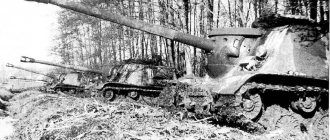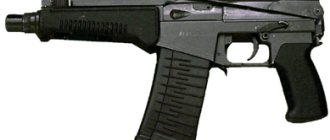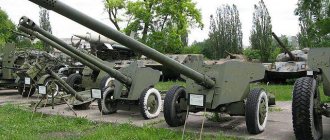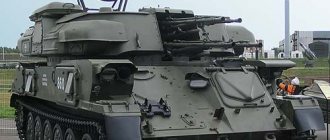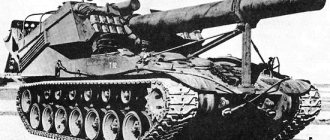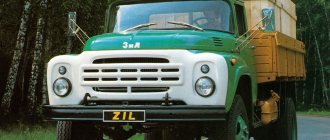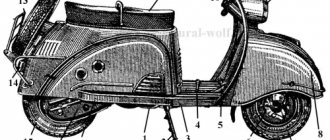After its collapse, the USSR left a rich legacy for its successor countries. Developed infrastructure, industry, technology. Some of the latter are still in use today. Some, however, are due to a simple lack of budget to purchase new, modern equipment.
Do you think the Hyacinth is the best gun?
NOT REALLY
But there are Soviet developments that, despite their already quite venerable age, have not yet lost their relevance and even now meet the requirements of the time! This is exactly what the 152-mm artillery cannon 2A36 “Gyacinth-B” is, which, after almost half a century of its creation, is actively used during combat operations.
Background
During the Second World War, self-propelled artillery guns established themselves as powerful and dangerous weapons, the presence of which could often decide the outcome of the battle in favor of one side or another in the conflict. Their price was significantly lower than that of tanks, but in certain conditions, cheap and not very well armored vehicles could effectively destroy heavy enemy armored vehicles. For our country, this was especially important at the initial stage of the war, when there was a catastrophic shortage of military equipment, and its production needed to be simplified and made as cheap as possible.
Almost all motorized rifle divisions of the USSR in the post-war period were equipped with tanks and self-propelled guns on a mixed basis. Each motorized rifle regiment had high-quality artillery weapons, which were represented by a full SU-76 battery. The share of other artillery weapons, which were created during the war, has increased significantly.
All self-propelled guns put into service during that period were intended exclusively to support attacking infantry in battle. However, in the post-war period, military doctrine increasingly prescribed the use of self-propelled guns together with or instead of tanks.
In the 50-60s, the role of self-propelled guns was constantly declining. Often the question arose about completely stopping their production and replacing this type of weapon with tanks. Thus, by the mid-60s, very few new models of self-propelled guns had been developed. Almost all of them were based on old tank chassis from the Second World War, equipped with new armored hulls.
Operators
Hyacinth cartridges.
- Azerbaijan Azerbaijan - 18 2A36, as of 2016[7]
- Armenia Armenia - 26 2A36, as of 2020[8]
- Belarus Belarus - 48 2A36, as of 2020[9]. According to other sources, it is not in service[10].
- Georgia Georgia - 3 2A36, as of 2020[11]
- Moldova Moldova - 21 2A36, as of 2020[12]
- Russia Russia: 1,100 2A36 in storage, as of 2017[13] Ground forces - some in service with the 68th Army Corps[14]
- Coastal troops - 50 2A36, as of 2020[15]
- Ground forces - 180 2A36, as of 2020[17]
Former operators
- USSR USSR - passed to the states formed after the collapse
- Iraq Iraq - 180 2A36 delivered from the USSR between 1986 and 1988[19]
- Kazakhstan Kazakhstan - 180 2A36, as of 2012[20]
- Finland Finland - 24 2A36 delivered from the USSR in 1989, used under the designation K-89[19]
Decline of the industry
At the end of the 50s of the last century, Nikita Khrushchev, a passionate fan of missile weapons, sanctioned an almost complete stop in the development of barreled weapons in the USSR. Because of this, we are decades behind our potential opponents. History has repeatedly punished the USSR for this miscalculation: already in the 60s it became clear that the importance of cannon artillery remained at the same level. This was especially clearly confirmed by the episode in China, after which the Secretary General reconsidered his views on this problem.
Then the Kuomintang troops deployed an entire battery of long-range American howitzers and began to calmly shell the territory of mainland China. The Chinese and our military advisers found themselves in an extremely awkward position. They had M-46 cannons with a caliber of 130 mm, but their shells did not reach the enemy batteries even with a fair wind. One of the Soviet advisers suggested an original solution: in order to reach the target, you just had to warm up the shells properly!
Both sides of the conflict were greatly surprised, but the reception turned out to be successful. It was this incident that served as the impetus for the development of the Hyacinth self-propelled gun in 1968. Its creation was entrusted to Perm specialists.
Where can you see
- Russia Russia - Museum of Russian Military History in the village of Padikovo, Istrinsky district, Moscow region.
- Russia Russia - Victory Memorial Park in the city of Cheboksary.
- Russia Russia - Museum of Perm Artillery (museum of the history of PJSC Motovilikha Plants), Perm, st. 1905, no. 20.
- Russia Russia - Military Historical Museum of Artillery, Engineering Troops and Signal Corps, St. Petersburg, Petrogradsky district, Alexandrovsky Park, 7.
- Russia Russia - Museum of Military Equipment of the UMMC in Verkhnyaya Pyshma, Sverdlovsk Region[21].
- Russia Russia - Exhibition site near the Museum of Armored Vehicles in the urban settlement. Prokhorovka, Belgorod region
Directions of work
Since the work needed to be completed as quickly as possible, development went in two directions at once. Specialists worked both in the field of creating self-propelled and towed guns (indices “C” and “B”, respectively). The Main Directorate of Artillery immediately assigned these vehicles the designations 2A36 and 2A37. Their important feature was not only unique ballistics, but also special ammunition that was manufactured specifically for the Giatsint self-propelled guns. 152 mm is a fairly common caliber, but few people know that the Soviet Army did not have other ammunition of a similar caliber that could be used by these self-propelled guns.
History of creation[edit | edit code]
Giatsint-B in the Military Historical Museum of Artillery, Engineering Troops and Signal Corps.
In the SKV of the Perm Machine-Building Plant, back in November 1968, the development of a new 152-mm gun with an increased firing range began. It was designed from the very beginning in two versions - towed under the designation 2A36 "Gyacinth-B" and its version 2A37 for the 2S5 "Gyacinth" self-propelled artillery mount.
Chief designer - Yu. N. Kalachnikov.
Prototypes of the guns underwent field testing in 1972; the gun was delivered to the Soviet Union in 1976.
Even today, the 152-mm 2A36 cannon fully meets modern requirements: it has great firepower, is reliable and mobile, can be transported over any distance by rail, water and air, and is capable of performing complex tasks in all types of combined arms combat.
According to foreign military experts, the 2A36 cannon (in a towed version) has the greatest firing range (40 km - with an active-rocket projectile) of all artillery systems of a similar caliber (152 mm) ever put into service in the USSR and Russia since the middle of the 20th century century, second in this regard only to the 203-mm self-propelled gun 2S7 “Pion” (47.5 km - with an active-missile projectile).
General information
The artillery unit itself was created in Perm, the chassis was designed in Yekaterinburg, and at the NIMI institute the best specialists thought about creating the most suitable ammunition for such a system. Already in 1969, two versions of the new self-propelled guns were proposed for consideration by the commission: in the cabin and turret versions. The second option was approved. In 1970, the government initiated full-scale work on the Giatsint self-propelled guns. Already at the beginning of 1971, the first 152 mm caliber guns were presented to the “public court,” but due to the unavailability of the shells, the firing was postponed.
The crew of "Hyacinth S" consists of five people. On the highway, the car can travel at speeds of up to 60 km/h, and the range is about 500 kilometers. The body is made of armor plates (aluminum alloys) 30 mm thick by welding. Such armor does not provide any adequate protection for the crew even from large-caliber machine guns, and therefore, when performing combat missions, it is necessary to carefully consider the location of the vehicle on the ground.
In addition, the disadvantage of the Hyacinth S installation is its rather low rate of fire - no more than five rounds per minute. It should be taken into account that the supply of shells is carried out manually, and therefore during intense combat the crew may simply get tired, which will further reduce the effectiveness of such loading. And one more thing - given the characteristics of domestic winters, one should not be surprised at the cool attitude of the military towards an open gun not covered by a turret. Even in the conditions of the Chechen “cold” period, there were cases of frostbite among Hyacinth crews.
The developers can only be justified by the fact that this self-propelled gun was originally planned during the Cold War. Simply put, it was designed specifically for combat operations in Western Europe, where temperatures below 7-8 degrees Celsius are rarely observed in winter. It is worth remembering at least that the BMP-1, designed for the same conditions, did not perform well in Afghanistan (albeit for other reasons).
Dimensions of the gun
The gun has very impressive dimensions: its length is almost 13 meters in the stowed position, but in combat this figure is slightly less - approximately 12.5 m. The height of the barrel in the stowed position is 2760 millimeters. The ground clearance of the two-axle chassis is 475 millimeters. The stroke width is 2340 millimeters. The diameter of each of the four wheels is 1080 millimeters, and the tire width is 300 millimeters.
The operating pressure in the tires should be maintained at 4.8 kgf/cm², the spring travel should be approximately 150 mm. The Giatsint-B howitzer weighs about 9,800 kilograms. The maximum firing range of high-explosive fragmentation shells is 28.5 kilometers. What other distance can the Hyacinth shoot? The howitzer, whose firing range under normal conditions reaches 25-28 thousand meters, can fire at a distance of up to 41 kilometers when using modern rockets.
All this allows us to say that the weapon, which began to be developed back in the 60s of the last century, is still distinguished by its impressive effectiveness on the battlefield.
Powerplant and chassis
The engine and transmission compartment is located in the front of the hull. The power plant is represented by a V-59 V-shaped engine with a power of 520 hp. The peculiarity is that it is assembled into one unit with a dual-flow transmission. The gun commander's compartment is located to the right of the engine. Immediately in front of the commander's cupola there is a driver's workplace. The fighting compartment itself is located in the central part of the hull. The shells are in vertical stacks.
The chassis used in this vehicle is actually similar to the one that was used to create the Akatsiya self-propelled gun. Since the self-propelled gun is of the open type, the gun is mounted openly. This feature made it possible to make the car somewhat shorter. Since the Hyacinth artillery mount is relatively small in size (compared to its analogues), it is convenient to transport by air.
Initially, it was planned to arm the new vehicle with a PKT machine gun, but this option was not accepted. Later, it was nevertheless included in the project a second time. By 1972, projects of both types of “Hyacinth” with a separate-case loading weapon were finally ready. It should be noted that at the same time, a version with cap charges was being developed. However, this option never progressed beyond sketches. The Hyacinth self-propelled gun series went into production already in 1976, and the saturation of the troops with new equipment immediately began.
The new equipment received combat testing in Afghanistan, and the military immediately gave this self-propelled gun many flattering characteristics. They were especially impressed by the powerful projectile, which could be successfully used to destroy powerful Taliban fortifications. In some places, the Hyacinth self-propelled 152-mm cannon received the nickname “Genocide,” which hints at its combat power.
Some modifications
High combat power and efficiency of use (the self-propelled howitzer "Hyacinth" received the nickname "Genocide") contributed to the fact that many enterprises in the USSR began to offer their own modifications of such useful weapons. One of the options received the BC index. The letter “K” indicates the cap type of loading. In principle, this approach was expected: the presence of a brass sleeve in the design of a 152-mm projectile significantly increases its cost.
In addition, a number of 155 mm Hyacinths were produced, intended for export to countries that used NATO standard artillery shells.
Gun characteristics
The design of the 2A37 gun is quite standard: a monoblock tube, a breech and a muzzle brake, which is impossible to do without with such an impressive caliber. By the way, it belongs to the slot type. The shutter is semi-automatic, rolling pin type with horizontal skew. The gun is equipped with a hydraulic-type recoil brake, as well as a knurler (pneumatic), the peculiarity of which is that its cylinders roll back along with the barrel. The smallest rollback is 730 mm, the largest is 950 mm.
A chain-type rammer works in two steps: first it sends a projectile into the breech, and only after it does the line of cartridges come. Sector lifting and turning mechanisms simplify the work of the crew. The gun is rotated on a simple machine, the design of which eliminates almost all major breakdowns.
Notes
- Chebotarev S.
I. artofwar.ru (March 12, 2012). Retrieved May 24, 2020.
Beshkarev A.I. artofwar.ru (May 5, 2016). Retrieved May 24, 2020.- Antipov A.V.
Lev Rokhlin: The life and death of a general.. - M.: Eksmo-Press. — 418 p. — ISBN 5-04-001676-X. - . OSCE (6 May 2016). Retrieved May 22, 2020.
- . “Motovilikha Plants” OJSC
(2013). Retrieved August 19, 2020. - The Military Balance 2020. - P. 178.
- The Military Balance 2020. - P. 182.
- The Military Balance 2020. - P. 184.
- The Military Balance 2020. - P. 188.
- The Military Balance 2020. - P. 210.
- . Press service of the Eastern Military District
(05/23/2017). Retrieved July 24, 2020. - The Military Balance 2020. - P. 194.
- The Military Balance 2020. - P. 203.
- ↑ The Military Balance 2020. - P. 205.
- The Military Balance 2020. - P. 208.
- ↑
- The Military Balance 2012. - P. 255.
- Ruzaev S.V.
Artillery systems from the collection of the UMMC Museum of Military Equipment. — Ekaterinburg: Uralsky Rabochiy, 2020. — 80 p. — 1000 copies. — ISBN 978-5-85383-687-7.
Other Features
In the horizontal area, the gun can be aimed within 30°. Vertical guidance capabilities - from -2.5° to 58°. The gun is covered with a durable shield, which protects the crew of the vehicle from bullets, shrapnel and the shock wave that occurs when fired. The shield is made by simple stamping from a single sheet of armor steel. Let us remind you once again that “Hyacinth” is a self-propelled gun. The photos show her low security quite well. This feature of this technique is due to the fact that it is not intended for direct combat clashes with the enemy.
Sighting devices are represented by a simple mechanical sight D726-45, combined with a PG-1M gun panorama. The OP4M-91A optical sight is designed for targeting closer and clearly visible targets. The mass of the gun is 10,800 kg.
Soil, replanting, forcing
The soil for hyacinths is usually prepared in August, two months before planting, well-draining and always nutritious. Humus, sand, and peat are added if the soil in the garden is clayey. Attention! Fresh organic matter is unacceptable and over-oxidized soils are contraindicated.
It takes one and a half shovel blades deep to loosen the area for the bulbs. The application of mineral fertilizers is beneficial for hyacinth: superphosphates; potassium and magnesium sulfate. Another option: wood ash or dolomite flour.
Small hyacinth bulbs are planted on the prepared area in September-October to a depth of 18 cm. Before winter, they must have time to take root, but not begin to germinate, otherwise the sprouts will freeze. Hyacinths like to be planted in a so-called “sand jacket”, a layer of sand about 3-5 cm. It will protect the bottom of the bulb from rotting.
If it so happens that planting occurs in November, it is necessary to cover the bulbs with film and leaves or sawdust and spruce branches. With the onset of warmth in spring, the shelter is carefully removed.
Throughout the season, the planting with hyacinths is weeded, bad specimens are removed, loosened, watered and fed 2-3 times. Dry flowers are removed from faded peduncles.
Hyacinth Red Magic.
Information about the chassis and ammunition
In order to unify the chassis of the 2S5 Giatsint self-propelled guns, it was built on the same base as the 2S3 Akatsiya self-propelled guns. As in the case of the Akatsiya, all ammunition is placed inside the hull, but the supply of shells to the gun is done manually. Outside, at the rear of the vehicle, a massive stabilizer plate is attached. It rests on the ground when firing, giving the installation the necessary stability.
That is why the Hyacinth self-propelled gun, in principle, cannot fire on the move. However, the standard time for bringing the installation from the traveling position to the combat position is only four minutes, so the practical effectiveness of this self-propelled gun is very high. This self-propelled gun has excellent maneuverability, which ensures fast movement on the battlefield. Don't forget about the built-in digging equipment. Using it, the crew can bury the car into the ground in just a few minutes.
You should know that initially the standard ammunition was the VOF39 projectile, which had a total mass of 80.8 kg. The lethal effect is achieved by the OF-29 charge (46 kg), which uses almost five kilograms of the powerful A-IX-2 explosive. The fuse is the simplest (percussion) B-429. A little later, the developers created the ZVOF86 round, which, when combined with the OF-59 projectile, can be used to hit targets at a distance of up to 30 kilometers.
The usual ammunition load includes three dozen separate-case-loading shots, and among them there are new types of shots with an improved aerodynamic shape, as well as projectiles with active laser homing.
Fertilizers
When planting hyacinth, add compost or bone meal to the hole. You can also prepare the soil for growing hyacinth a month before the procedure by adding humus or compost to it and digging it thoroughly. Another fertilizer recommended for the initial growth phase is ammonium nitrate, which is applied immediately after the soil thaws. Later, when the first buds appear, use complex mineral supplements. Plants respond very positively to fertilization and produce flowers much faster and more abundantly.
"Nuclear Flower"
In general, this was not advertised too much in our press. In the West, there have long been reports that the Hyacinth self-propelled gun can use nuclear charges with a power of up to 0.1-2 kT. It is known that today in our country completely new 152 mm shells are being developed for the Hyacinth. One of the most interesting is the 3-0-13 cluster projectile, and there are plans to create independently guided fragmentation elements for it. Projectiles designed for active jamming, which seriously complicate or make impossible the operation of enemy electronics, look very promising.
Notes
- Interview with chief designer V.A. Kukis // Ural military news. - 2012. - No. 37-38 (September).
- . “Motovilikha Plants” OJSC
(2013). Retrieved August 19, 2020. - . Military information agency of the Armed Forces of the Republic of Belarus “Vayar”
. Retrieved August 19, 2020. - The Military Balance 2020. - P. 182.
- The Military Balance 2020. - P. 183.
- The Military Balance 2020. - P. 184.
- The Military Balance 2020. - P. 185.
- The Military Balance 2020. - P. 190.
- The Military Balance 2020. - P. 194.
- The Military Balance 2020. - P. 203.
- The Military Balance 2020. - P. 205.
- . Air Defense Bulletin. Retrieved December 7, 2020.
- The Military Balance 2020. - P. 491.
- . TASS (February 25, 2015). Retrieved May 22, 2020.
- . Lenta.ru (July 30, 2014). Retrieved December 7, 2020.
- Dmitry Litovkin.
. Glance (August 1, 2014). Retrieved December 7, 2020. - (English). CNN (February 17, 2016). Retrieved May 22, 2016.
Tactical purpose
This weapon is designed to suppress active enemy artillery batteries, destroy bunkers and other field fortifications, destroy various enemy command posts (including in the rear), as well as to combat enemy heavy armored vehicles. As we have already mentioned, sighting devices allow you to fire both direct fire (optical) and from closed positions (mechanical sights). Like other domestically produced artillery and small arms, self-propelled guns can be effectively used in any weather and climatic conditions.
Unfortunately, today the 2S5 gun is significantly outdated in moral terms. However, this self-propelled gun to this day remains one of the longest-range self-propelled guns of domestic production, and in this regard, the Hyacinth is second only to the Pion with its 203 mm caliber.
Unlike similar installations of this class, the Hyacinth artillery installation was not transferred to any Warsaw Pact country. Only in 1991, immediately after the collapse of the USSR, Finland acquired 15 units. It should be noted that at present there is no information about the development of an adequate replacement for this self-propelled gun for our troops, while potential opponents of development in this area have never stopped. Thus, we do not know how long “Hyacinth” will be relevant. A self-propelled gun of this model will probably remain in service with our army for a very long time.
Combat use
Practical operation in Afghanistan has shown that in one minute a prepared and trained crew can fire about five to six shots. In general, reviews from the military about this weapon are very flattering: the power and excellent ballistics of the shells made it possible to guarantee the destruction of almost any enemy fortification.
Note that in those conditions the artillerymen had a very difficult time, since there was almost never visual control of the target, and the changeable mountain weather greatly complicated even direct fire. At the same time, the “Hyacinths” earned recognition from our military due to their high reliability: even after several dozen shots fired simultaneously, the guns were ready for further combat.
Note that the 152-mm howitzer “Hyacinth” was quite actively used by our troops in both Chechen campaigns. The combat power of this weapon has repeatedly served well, since with its help it was possible to destroy the position of militants without much difficulty, even if they were entrenched in massive concrete buildings. Several direct fire volleys - and all that was left of the bunkers was a mountain of construction rubble.
